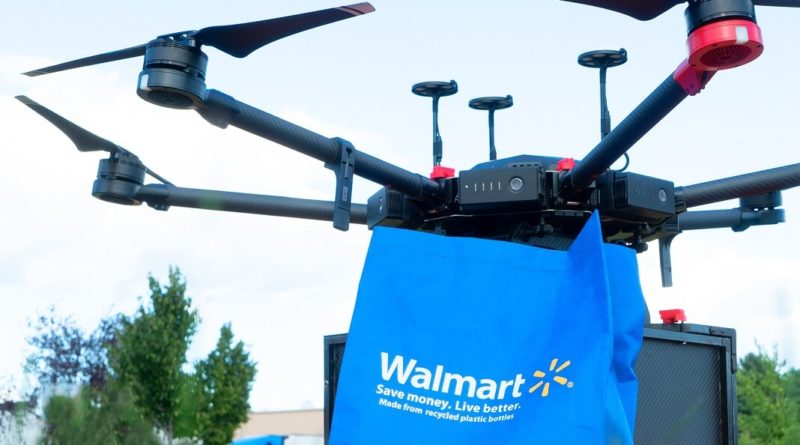Walmart Is Piloting Drone Delivery in North Carolina
The coronavirus pandemic has forced us to quickly adapt to circumstances that were unimaginable a year ago. Companies are finding new ways to do business, and in the process, we’re seeing an acceleration of technologies that, though they were already in the pipeline, would have taken several more years to really pick up speed.
One of these technologies is drones. Though the regulations around them are still somewhat piecemeal, drones have seen a steady uptick in practical use cases over the last couple years. Then along came a virus that made people want to stay at home, avoid interaction with strangers, and buy a lot more of the products they need for day-to-day life online (Amazon’s stock has gone up by more than 50 percent this year, and the company has had to hire 175,000 new employees to keep up with the huge demand spike in online purchases).
As America’s biggest retailer (as of 2019 it still far outpaced Amazon in terms of revenue), it’s only logical that Walmart is rushing to keep up—and looking to cutting-edge tech to help. This week the company launched a pilot drone delivery program in Fayetteville, North Carolina. In partnership with drone company Flytrex, the mega-retailer is initially planning to use drones to deliver grocery and household items.
Flytrex has been around since 2013, and has aimed to cater to people living in suburban areas; the company’s website emphasizes that urbanites have access to plenty of shopping and delivery options, while suburb-dwellers tend to be at least a few-mile drive away from stores and often don’t have access to a lot of home delivery services.
Flytrex drones go 32 miles per hour, have a cruising height of 230 feet, and can carry up to 6.6 pounds (“6-8 hamburgers” is the somewhat odd example their website gives for this weight). The drones don’t have any onboard cameras, navigating with GPS and sensors only, and they can fly about seven miles before needing a recharge. The company has been working with Icelandic retailer AHA since 2018, delivering groceries to peoples’ backyards in Reykjavik.
Controlled via a cloud-based dashboard, the Walmart delivery drones will hover 80 feet above customers’ yards and lower their orders down using a tether. This seems more complication-prone than other final-delivery options, like having the drone land and the customer pull their order from it, but hey, we’re in a pandemic and contact-free everything is what’s in style.
Walmart and Flytrex haven’t yet said how long the pilot program will last nor when or whether it will be expanded to other areas. But drone delivery is set to be a trend that only grows; a 2019 study estimated that the number of delivery drones in the global e-commerce industry will reach 2.2 million units by 2025, in the process creating a slew of jobs to repair and maintain the drones. Amazon was just granted FAA approval for drone delivery at the end of August, and will soon start its own pilot program in the US.
It will be a while still before we can look up and regularly see drones whizzing across the sky, or have one drop our packages in the yard for us—but the wheels (and propellers) have definitely been set in motion.
Image Credit: Walmart
Recent Posts
- Smart concrete could pave the way for high-tech, cost-effective roads
- 3.2 billion images and 720,000 hours of video are shared online daily. Can you sort real from fake?
- 12-Year Old Builds A Working Fusion Reactor
- ‘The Social Dilemma’ Will Freak You Out—But There’s More to the Story
- How to make rope out of plastic bottles






